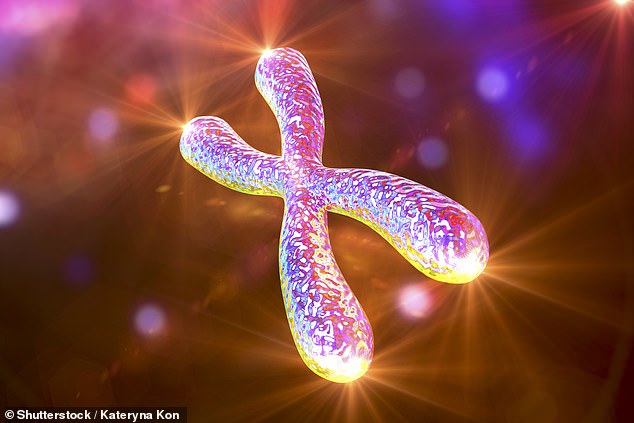[ad_1]
Scientists have taken a bold and controversial step toward creating synthetic human DNA from scratch, a move some critics liken to ‘playing God.’
The research aims to unlock new treatments for autoimmune disorders, heart failure, viral infections, and age-related diseases.
To do so, scientists are developing tools to build large, complex sections of human DNA in the lab and insert them into skin cells to observe how they function.
The ultimate goal is to construct entire human chromosomes, a foundational step toward assembling a fully synthetic human genome.
But the project has sparked ethical and safety concerns. Experts warn that the technology could have catastrophic risks, leading to biological weapons or genetically engineered ‘designer babies.’
‘The genie is out of the bottle,’ said Professor Bill Earnshaw of the University of Edinburgh.
‘If an organization with the right equipment decided to start synthesizing anything, I don’t think we could stop them.’
Dr Pat Thomas, a longtime campaigner on genetic ethics, added: ‘While many scientists have good intentions, the science can be repurposed to harm, and even for warfare.’

Every cell in our body, except red blood cells, contains DNA, a molecule that carries genetic instructions for life
Every cell in the human body, except red blood cells, contains DNA, the molecule that carries the genetic instructions for life.
DNA is composed of just four chemical bases, known as A, G, C, and T. These letters repeat in countless combinations to form the code that shapes everything from eye color to disease risk.
Over the next five years, teams from the University of Oxford, Cambridge, Kent, Manchester, and Imperial College London will collaborate to build and test synthetic DNA in the lab.
Their short-term goal is to better understand how DNA influences human development, health, and aging.
By constructing DNA from scratch, rather than editing existing strands, scientists gain unprecedented control to explore genetic function and test new biological theories.
This research could help uncover how faulty cells trigger disease or lead to the creation of disease-resistant tissues and repair techniques for organs like the heart or liver.
‘This is about developing therapies that will improve people’s lives as they age, leading to healthier aging with less disease,’ Dr Julian Sale of Cambridge’s MRC Laboratory of Molecular Biology, told the BBC.
Dr Sale added that the technology also allows researchers to explore the so-called ‘dark matter’ of the genome, the vast, little-understood regions of DNA that don’t code for proteins but may play critical roles in cellular function.

While medical treatments may still be years away, the work could eventually lead to new therapies, like virus-resistant tissues, lab-grown organs, or advanced cell-based medicine.
Professor Matthew Hurles of the Wellcome Sanger Institute said the work could revolutionize treatment by revealing why certain cells cause disease and how to fix them.
While medical applications may still be years away, researchers say the work could eventually lead to breakthroughs like virus-resistant tissues, lab-grown organs, or advanced cell-based therapies.
‘Building DNA from scratch allows us to test out how DNA really works and test out new theories, because currently we can only do that by tweaking DNA in existing living systems.’
This approach may also lead to advances beyond the human genome.
Philosophy professor Iain Brassington from the University of Manchester highlighted the potential for creating synthetic mitochondria, the cell’s energy powerhouses, which could help women with inherited mitochondrial disorders have children without relying on egg donors.
But Brassington also warns of serious consequences if the technology is misused. Lab-engineered bacteria designed to clean up oil spills or digest plastic, for example, could wreak havoc if released into the environment.
‘Such bugs getting into the environment could be catastrophic,’ he said.
[ad_2]
This article was originally published by a www.dailymail.co.uk . Read the Original article here. .

